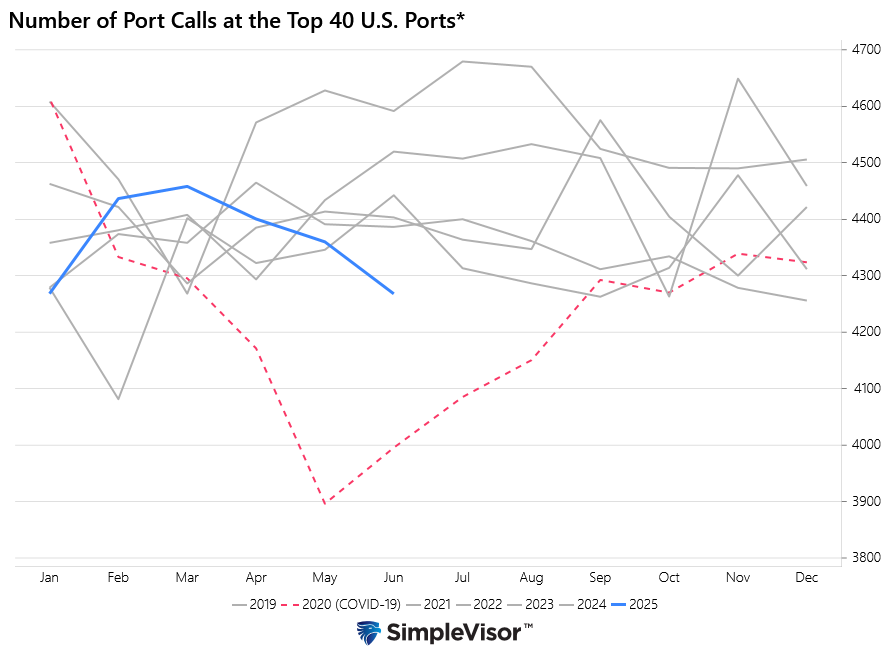Typically, in Monday’s Commentaries, we share a few paragraphs titled “The Week Ahead’ in a lower section. This week, the amount and importance of the data could have a meaningful impact on markets and the Fed. Thus, this week’s’ “The Week Ahead’ gets top billing. Let’s review the calendar:
- Monday: There is little economic or earnings data to digest.
- Tuesday: data will help us better gauge the breadth of the labor market. Earnings releases from Visa (NYSE:), Procter & Gamble (NYSE:), and Unitedhealth Group (NYSE:)
- Wednesday: data is the first look at June employment trends. This data set has been considerably weaker than the BLS. Following a decline of 33k jobs, Wall Street only expects a gain of 20k jobs this month. Second-quarter is expected to increase by 2.5%, after declining by 0.5% in the first quarter. The FOMC will announce its . While the market expects no change, investors will closely watch for signs indicating whether a September rate cut is becoming more likely. Earnings from Microsoft (NASDAQ:), META (NASDAQ:), and Qualcomm (NASDAQ:) will be significant.
- Thursday: prices, the Fed’s preferred inflation gauge, are expected to increase by 0.3%. Apple (NASDAQ:), AMAN, MC, and AbbVie (NYSE:) headline earnings releases.
- Friday: The BLS report is expected to show a gain of 110,000 jobs, but a 0.1% increase in the unemployment rate. Chevron (NYSE:) and Kimberly-Clark (NASDAQ:) release earnings.
Between this week’s labor and inflation data, corporate earnings, and new Fed guidance, the market has a lot of new information to digest. We should expect a healthy dose of volatility around many of the events we highlight.
Port Traffic Slows: Tariffs Or Economy?
Imports into the top 40 US ports have slowed significantly over the past couple of months. To wit, June port calls are the lowest since Covid, as shown below. Furthermore, the number of port calls tends to increase in the Spring and into Summer. This year they have been declining.
This may allude to softer trade flows resulting from tariffs and shifting global supply chain patterns. Additionally, we might also question whether weaker consumption, as reflected in economic data, is a contributing factor. As tariff deals begin to materialize and trade normalizes, we can expect to see an increase in port calls.
Moreover, the lull in imports likely means that companies have lower-than-normal inventories as we head into the holiday season. A pick-up in port calls could be sharp. Unless, of course, the economy is weaker than the current data allude to.
Tweet of the Day

